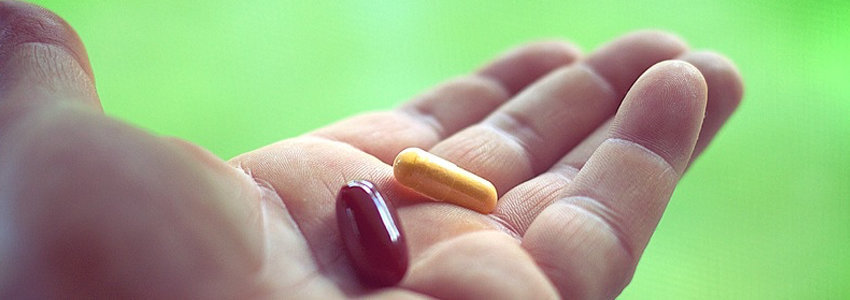Osteopenia and osteoporosis patients are often confused when their doctor recommends strontium for them. Patients then typically read up information about strontium, come across sensational write ups that misinform and create fear for Strontium. Doctors usually prescribe either of the two variants strontium ranelate or strontium citrate. After doing some of their own spade work, patients then begin to wonder why they were not prescribed the other form.
First let’s begin by dispelling the fear of strontium. Strontium is a naturally occurring silvery white or yellowish mineral found in the soil, and it has some serious health benefits. People who consume organic and farm produce usually get enough of this mineral and do not require strontium supplements. You can find out more about strontium-rich foods on our dedicated strontium food sources page. In it’s natural state strontium is a stable metal element of alkaline nature (atomic weight 38). It is non-toxic and non-radioactive. Its man-made isotope strontium (atomic weight 90) is radioactive. Like calcium, strontium is a Group 2 element in the periodic table and is placed just beneath calcium. In other words, it’s chemical properties and behaviour are very similar. (1)
Now let us look at the prescribed variants – strontium ranelate and strontium citrate. They are both strontium salts. Strontium ranelate is composed of two atoms of stable strontium (natural) and a molecule of ranelic acid (synthetic/man-made). Strontium citrate is composed of two atoms of strontium and a molecule of citric acid.
So why is it that citrate or ranelate salts are prescribed? This brings us to the absorption issue. Studies have shown that citrate salt of strontium is more readily absorbed in the gastrointestinal tract as compared to strontium carbonate or other strontium salts. However, strontium ranelate is known to be more bioavailable (chemical that is eventually able to reach systemic circulation). Studies have proved that the bioavailability of strontium ranelate is 25% after a 2-gram dosage administration. (2)
It is possible that strontium ranelate gives mild undesirable side effects such as nausea, diarrhea, headaches and eczema/rash. However, they are said to resolve after a few weeks of starting strontium ranelate. Chances of experiencing side-effects with strontium ranelate are marginally more than with strontium citrate.
Strontium ranelate is prescribed for young men and post-menopausal women only. It’s usage is contraindicated in pregnant and lactating women. Strontium ranelate is also not to be prescribed to persons who suffer from kidney conditions, thrombo-embolism or phenylketonuria (rare condition in which a person has the inability to break down the amino acid phenylalanine). It is not to be prescribed for children. (3)
Strontium ranelate is not available over the counter. It is classified as a drug/medicine and so can be bought on a doctor’s prescription only. Strontium citrate on the other hand, is categorized as a supplement and may be bought over the counter.
Strontium ranelate is almost twice as expensive as strontium citrate and almost six times more expensive than standard bone-building medication.
Strontium ranelate is manufactured and marketed by the French pharmaceutical company Servier Laboratories under the brand name Protelos. It is available in some European countries and in Asia. Strontium ranelate has not yet been approved by the American Food and Drug Administration and is thus not sold in the U.S. Strontium citrate is available worldwide and is sold by AlgaeCal, Nature’s Purest, Doctor’s Best, Bio Tech Pharmacal, Pure Encapsulations (Atrium Innovation Inc). Strontium is available in several strengths/potencies. Your doctor will advise you on the milligrams per dose you require and the timing you should observe while taking either of the two strontium salts (Read AlgaeCal article on how strontium supplements are to be taken on an empty stomach and apart from calcium supplements).
REFERENCES:
- Evidence-Based Perspectives on Hot Women’s Health Issues; GillianSanson.com; december, 2011; http://gilliansanson.wordpress.com/2006/03/07/strontium-%E2%80%93-a-novel-bone-building-treatment/
- Summary Of Product Characteristics, Interaction with other medicinal products and other forms of interaction (Page 4); Servier.com; December, 2011; http://www.servier.com/download/spc-pil/SPC_Protelos.pdf
- Find A Vitamin or Supplement; WebMD; December, 2011; http://www.webmd.com/vitamins-supplements/ingredientmono-1077-STRONTIUM.aspx?activeIngredientId=1077&activeIngredientName=STRONTIUM
OTHER REFERENCES:
- Strontium Citrate Safety; National Osteoporosis Foundation – Support Community; December, 2011; https://www.inspire.com/groups/national-osteoporosis-foundation/discussion/strontium-citrate-safety/
- Strontium Citrate: A Natural Treatment for Osteoporosis; Osteoporosis & Vitamins; December, 2011; http://www.osteoporosis-vitamins.com/strontium-citrate.html
- Strontium ranelate; Wikipedia; December, 2011; http://en.wikipedia.org/wiki/Strontium_ranelate





Rita Smith
February 17, 2012 , 8:23 amI am a 60 year old woman who does not have osteoporosis but I am on Ultimate Bone Support. Composition, Vitamins D3,K2 Zinc, copper, Manganese,-Boron, Silicon, Strontium citrate, L-Lysine, Hops. Is it ok to keep taking them because my doctor told me that they cannot be Bio if there is strontium in the supplements as strontium is prescribed for osteoporosis patients and she added that it is medicinal and treatment. Is that true? So do I stop taking them?
Rita Smith